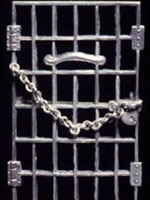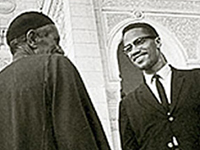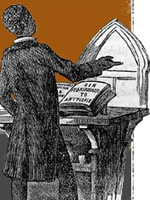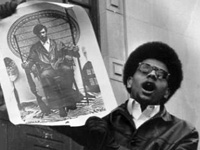Extended Interview with Drew Gilpin Faust
Drew Gilpin Faust, author of This Republic of Suffering: Death and the American Civil War, discusses the impact of the Civil War's massive death toll on American perceptions of death and dying.
Drew Gilpin Faust, author of This Republic of Suffering: Death and the American Civil War, discusses the impact of the Civil War's massive death toll on American perceptions of death and dying.
Ed Ayers, Peter Onuf, and Brian Balogh discuss the evolution of the concept of motherhood in U.S. history.
Greg Young of the Bowery Boys details the history of the New York Shakespeare Festival, more commonly known as Shakespeare in the Park. Originating in 1954, in workshops and free performances spearheaded by Joseph Papp, the festival now takes place yearly at the Delacorte Theater in Central Park. Young looks at Papps's struggle with park commissioner Robert Moses over holding the festival in Central Park, resulting in the construction of the Delacorte Theater in 1961, and at the recent history of the festival and at the actors who have participated in it.
From the BackStory website:
"Historian Cindy Aron discusses the origins of the modern American vacation. She explains why traveling to the beach didn't used to be appealing, and why Americans have often preferred 'self improvement' vacations to lazing around in a hammock."
From the BackStory website:
"Historian James Morone explains what nativism, racism, and women's suffrage had to do with the temperance movement of the early 20th century. And he argues that Prohibition was not the abysmal failure it's often made out to be.'"

One of several projects related to the foundation of a National Museum of Women's History in Washington, DC, this exhibit marks the 150th anniversary of the Seneca Falls Convention. As an in-depth image gallery, it "examines the development of a distinct female political culture and imagery that evolved to promote voting rights for women." Visitors can browse the gallery of 50 images of a variety of artifacts developed by suffrage supporters or take a more in-depth tour of the woman's suffrage movement. Through topical paragraphs (Campaign Symbols, Mass Movement, Two Strategies of the 19th-century Movement, and Creating a Female Political Culture) and selected images, the tour traces the history of the woman suffrage movement and the significance of its colors, icons, and slogans. Visitors can print out the exhibit for a 5,000-word text version. Additional resources include a quiz and a collection of related resources.
Did individual African American activists spark the Civil Rights Movement?
Textbooks are silent about defining race and racism, even though the modern Civil Rights Movement and its antecedent movements were efforts to challenge and eliminate racism. Rather than addressing the outrage of systematically being denied basic human rights by the U.S. Supreme Court, while citizens in a democracy, textbooks suggest that individual African Americans were merely sad or angry because individual white people did not want to fight wars, play baseball, learn, ride public transportation or eat lunch with them.
The most important lessons of the modern Civil Rights Movement will not be gained from passively reading textbooks. Examining primary sources will place students closer to the scenes of the modern Civil Rights Movement and its antecedent movements. Too often Dr. King is represented in textbooks as the person who was sent to save African Americans from racism, or the most powerful leader of the modern Civil Rights Movement, or as a political moderate. Instead, he was one of many powerful leaders.
Textbooks define segregation benignly with little reference to the ways in which northern and southern state governments and businesses systematically – and over the course of several decades -- reinforced an ideology of white supremacy through violence. Other groups of people affected by these same laws and practices – including American Indians, Mexican Americans, Asian Americans and Pacific Islanders, Native Hawaiians, Native Alaskans, Jews and Arabs – are seldom included in textbook discussions of racism. These absences strip away the underlying motivation for collective anger and social action.
Textbooks present the modern Civil Rights Movement in the same way as other U.S. social movements -- a spontaneous, emotional eruption of saintly activists led by two or three inspired orators in response to momentary aberrations in the exercise of democracy. In particular, textbooks imply that, until World War II, African Americans had been relatively content with social, economic, and political conditions in the U.S. Then, suddenly, African Americans were angered that they could not fight on battlefields, play baseball, attend schools, or sit on buses with whites. Further, African Americans were the only people to observe and protest these conditions. Finally, to act on their discontent, African Americans required instructions from a benevolent federal government, or a single charismatic or sympathetic leader. A more accurate telling of the story of the modern Civil Rights Movement indicates that the “river of purposeful anger” has been long, wide and well populated.
The modern Civil Rights Movement is often marked as beginning with the 1954 U.S. Supreme Court decision banning school segregation or the day in 1955 when Rosa Parks refused to move from a bus seat in Montgomery, AL and ends with the passage of the 1965 Voting Rights Act or with the assassination of Dr. Martin Luther King, Jr. in 1968 (Or, more recently, with the election of President Barack Obama). In some textbooks, the context for this movement are the years following the 1896 U.S. Supreme Court case of Plessy V.

This site is dedicated to the study of the life and legacy of Malcolm X. Only one of three "initiatives" is publicly available (Columbia faculty, staff, and students may also access the site's "multi-media study environment" section). "Oral histories," "outreach," and "Malcolm X biography project" are under construction. A chronology traces Malcolm's life from his birth in May 1925 to his assassination in February 1965, with short entries on major events. "Government Documents" offers FBI files on Malcolm X—4,000 pages of surveillance reports—covering the period 1954 to 1964. A brief summary accompanies each report and the files can be searched by keyword. The site's project journal, focusing on particular themes and issues, has seven articles on Malcolm X and eight weblog postings. Additionally, the site offers an e-seminar "Life after Death: Malcolm X and American Culture" by Columbia professor Dr. Manning Marble for a fee (available free to Columbia faculty, staff, and students). When this site is completed, it will be a good starting point for researching the ideas and life of Malcolm X.

This extensive companion to the PBS documentary of the same name provides interpretive and primary material on the history of African-Americans during slavery and Reconstruction, including essays, personal narratives, original documents, historical readings, and lesson plans. The "Time and Place" chronology of slavery and Reconstruction places the main events of U.S. history relating to African Americans between 1619 and 1881 in their historical context. "Slave Memories" allows visitors to hear the voices of African Americans recorded by the Works Progress Administration (WPA) on their experiences in slavery and Reconstruction. "Resources" includes 17 print resources, 23 books for children, and 30 websites related to slavery. "Slave Experience" allows users to explore slave life through the themes of legal rights and government; family; men, women, and gender; living conditions; education, arts, and culture; religion; responses to enslavement; and freedom and emancipation. Each features essays, historical overviews, original documents, and personal narratives.
A K-12 learning section features historical readings of narratives, slave stories and letters, student plays, links to 19 sites with primary sources, and six lesson plans for middle and high school. This website is a valuable resource for teachers as well as an excellent introduction and overview for those with an interest in the history of slavery and slave life in America.

In 1968, the Black Panther Party for Self Defense established a chapter in Seattle, one of the first outside of California. This website, devoted to portraying the history and collecting the memories of that chapter, is "the most extensive online collection of materials" for any Black Panther Party chapter. It includes 13 oral histories and brief biographies of key Black Panther Party members, 53 photographs documenting Black Panther events in the late 1960s, more than 100 news stories covering Party activities from 1968 to 1981 (four years after the Party was dissolved), testimony and exhibits from the 1970 Congressional Hearings investigating the Party, and all five issues of the Seattle Black Panther Party "Bulletin." A "Slide Show" highlighting some of these materials is a good place to begin for those unfamiliar with Black Panther Party history.
This website is part of the larger Seattle Civil Rights and Labor History Project, which provides extensive materials that can serve as historical context, such as a guide to civil rights groups from the 1910s to the 1970s, 14 2,000-word essays on the ethnic press in Seattle, 13 other "Special Sections" on topics such as segregation in Seattle, and 37 in-depth essays on historical topics such as the Ku Klux Klan in the 1920s. In addition, a "For Teachers" section provides eight lesson plans using the website's material for middle and high school students.